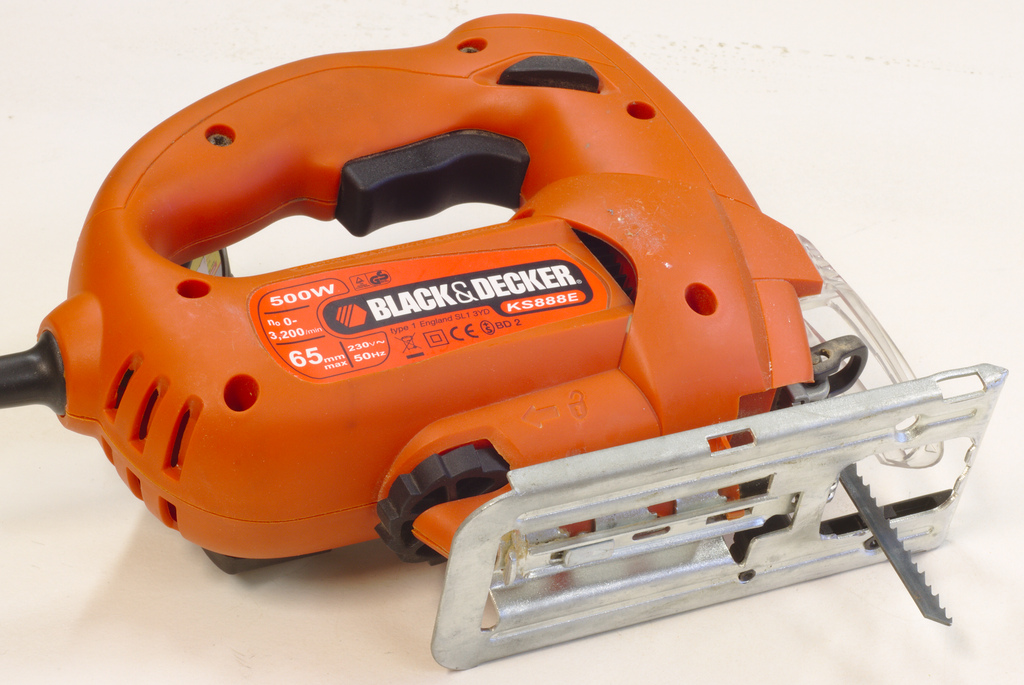Photo: Flickr.com/Dennis van Zuiljekom
About Stanley, Black and Decker, Inc.

Stanley Works first began increasing dividends in 1968. Stanley Works and Black and Decker merged in 2010 to form Stanley, Black and Decker.
Photo courtesy Charlie Brewer/flickr.com.
Stanley, Black and Decker was formed in 2010 by the merger of Stanley Works and Black and Decker. The company produces industrial and household tools, security systems and other engineering solutions for customers around the world.
The company’s history began in 1843 when Frederick Stanley started a shop in Connecticut to manufacture wrought iron hardware. 67 years later, in 1910, S. Duncan Black and Alonzo Decker started a similar shop in Baltimore, MD. Over the decades, both companies grew in size and scope until their merger in 2010. Stanley, Black and Decker boasts 21 different brands including Bostitch® Tools, AeroScout® Real-Time Location Systems, Powers Fasteners®, Vidmar® Storage Solutions and the eponymous Black+Decker® and Stanley® lines of tools.
The company is a member of the S&P 500 index and trades under the ticker symbol SWK.
Stanley, Black and Decker’s Dividend and Stock Split History
Stanley, Black and Decker began increasing their annual dividends in 1968. They met the Dividend Aristocrat criteria of 25 consecutive years of increases in 1993. The company traditionally announces dividend increases in July, with the stock going ex-dividend in September.
Stanley, Black and Decker has compounded its payout at an average rate of 6.1% over the last 5 years and 7.1% over the last 10 years.
Since 1968, when Stanley, Black and Decker began increasing dividends, the company has split its stock 5 times. The company split its stock 2 for 1 in June 1971, April 1980 and April 1996, and split 3 for 2 in August 1978 and August 1986. In addition, Stanley paid a 3% stock dividend in September 1972.
Stanley, Black and Decker’s Direct Purchase and Dividend Reinvestment Plans
Stanley, Black and Decker offers both a direct purchase and a dividend reinvestment plan. Both plans are maintained by ComputerShare; information is available at its website. The minimum initial investment is $250; a minimum of $100 is required for additional investments.
The plans have both purchase and sales fees. The fee to set up a direct purchase or dividend reinvestment account is $10. A fee of $5 plus 10 cents per share is assessed on each direct purchase by check or one-time direct debit. Ongoing monthly direct debit purchases are charged a fee of $2 plus 10 cents per share. Investors have the option of reinvesting dividends in full or only in part. Stanley, Black and Decker pays all transaction and per share fees on dividend reinvestments.
When selling shares, investors will pay a transaction fee of $15 plus a commission of 12 cents per share. Investors can minimize fees by buying and selling shares in larger quantities or by signing up for the monthly direct debit plan. Other fees may apply and investors should carefully review the plan documents.
Helpful Links
Stanley, Black and Decker’s Investor Relations Website
Current quote and financial summary for Stanley, Black and Decker (finviz.com)
Information on the direct purchase and dividend reinvestment plans for Stanley, Black and Decker
